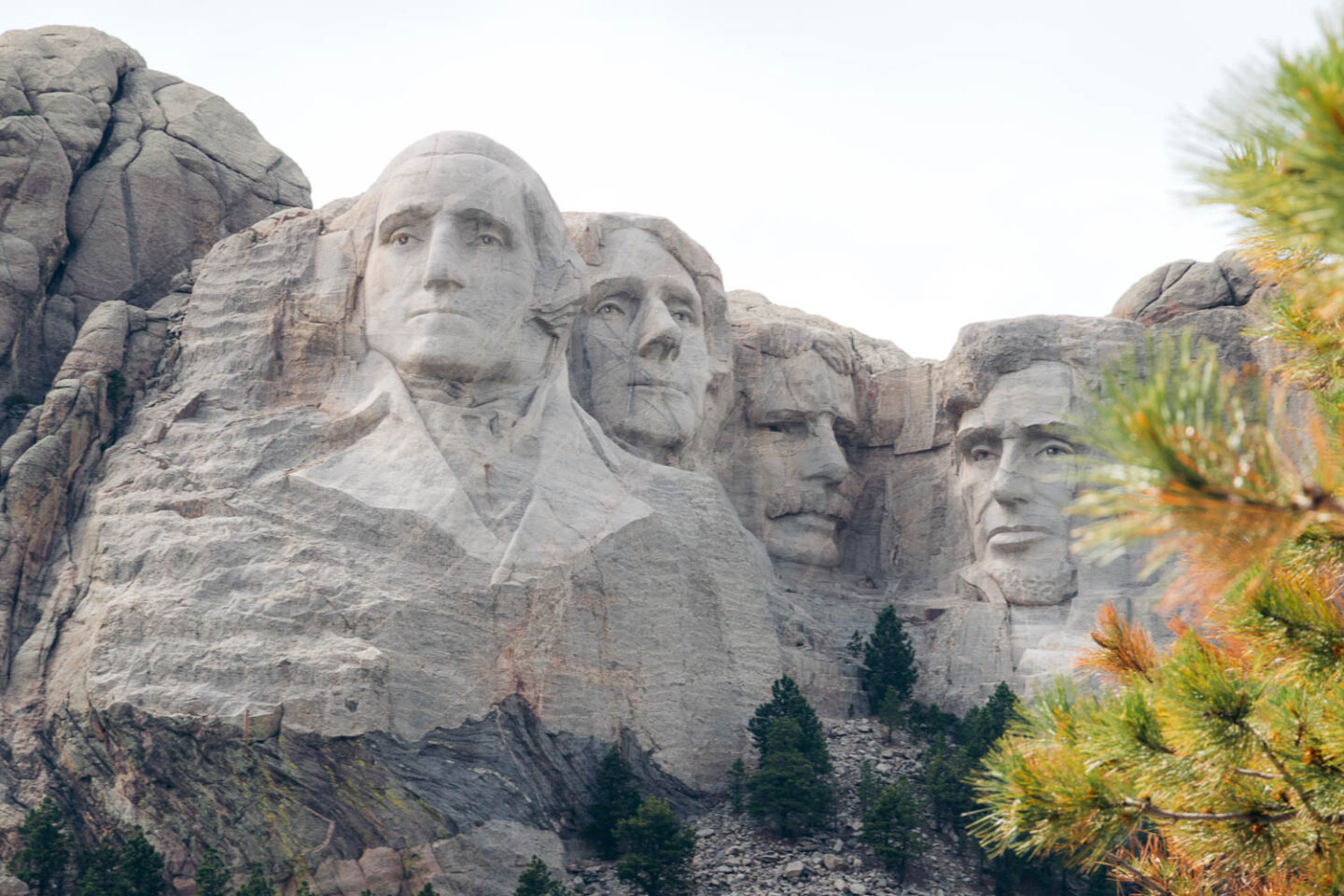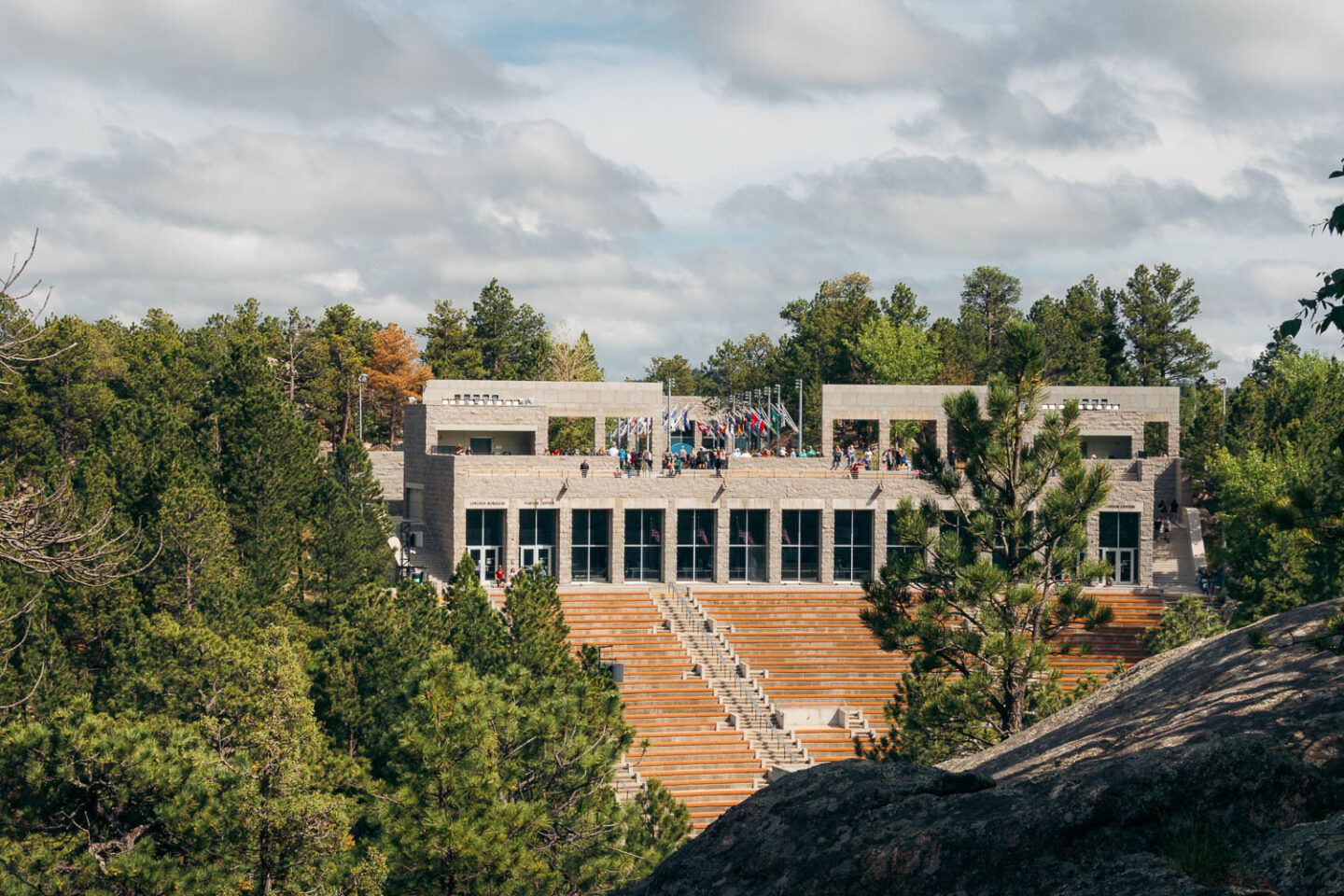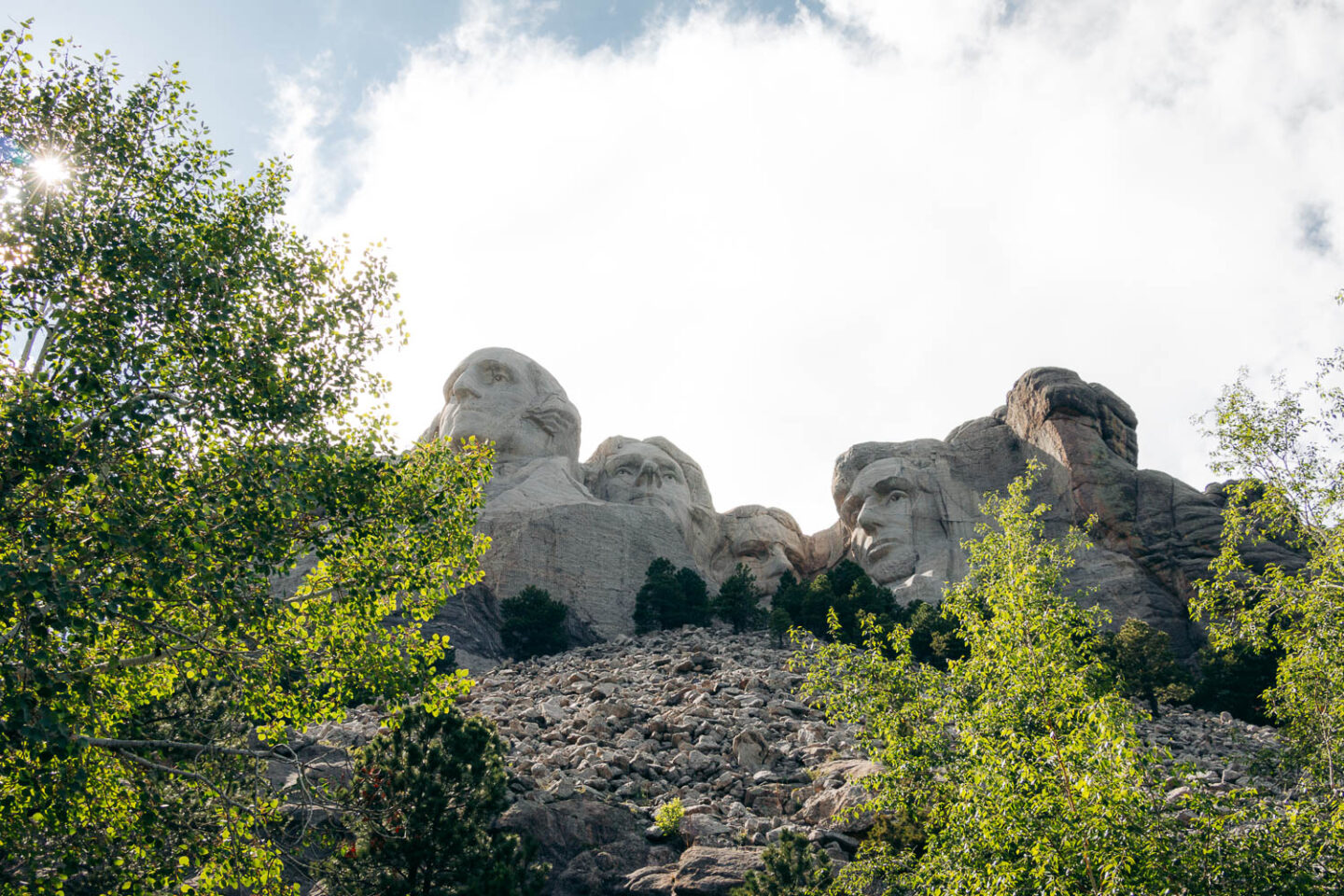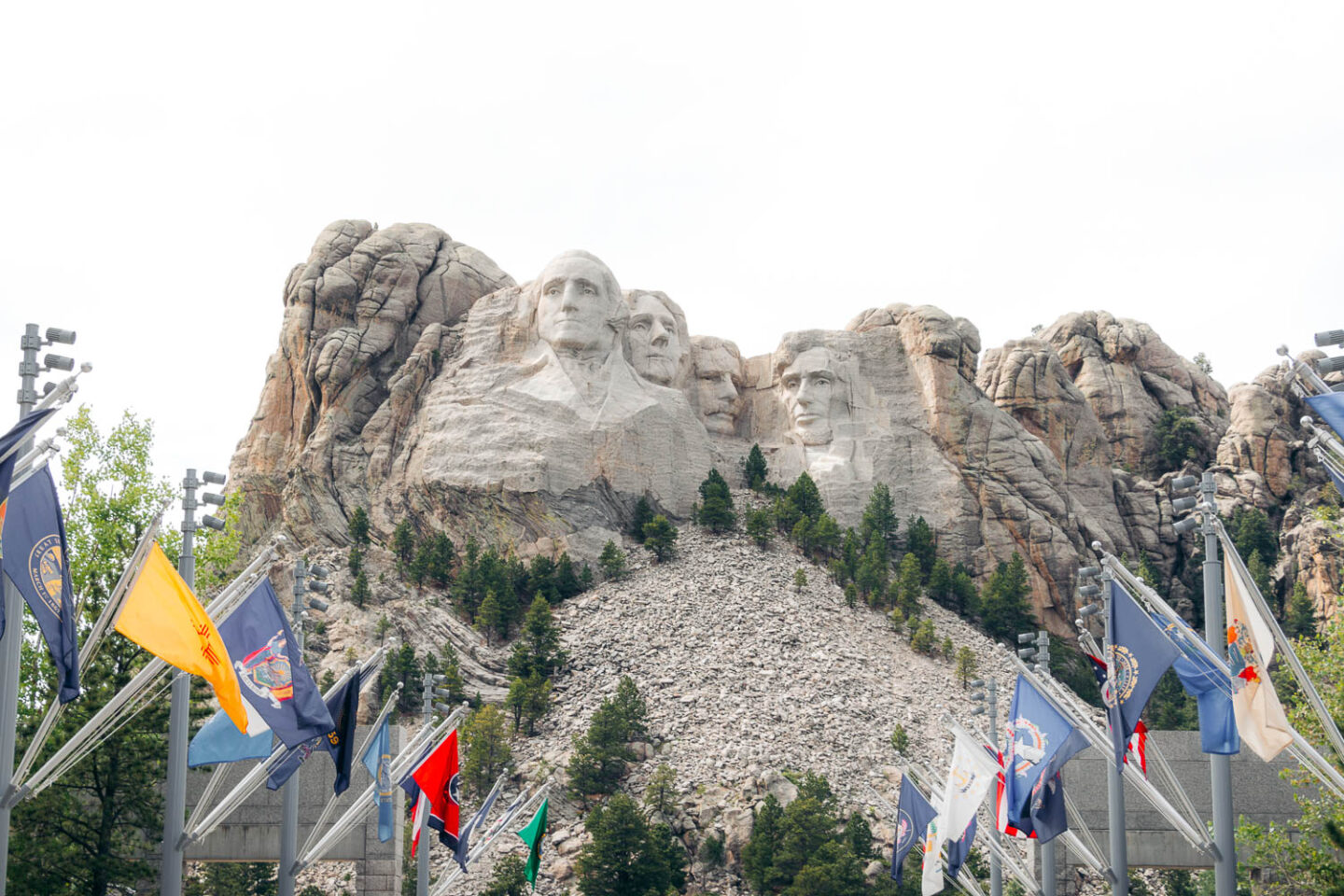Mount Rushmore National Memorial in the Midwest… Iconic, magnificent, controversial
Last updated: March 24, 2025
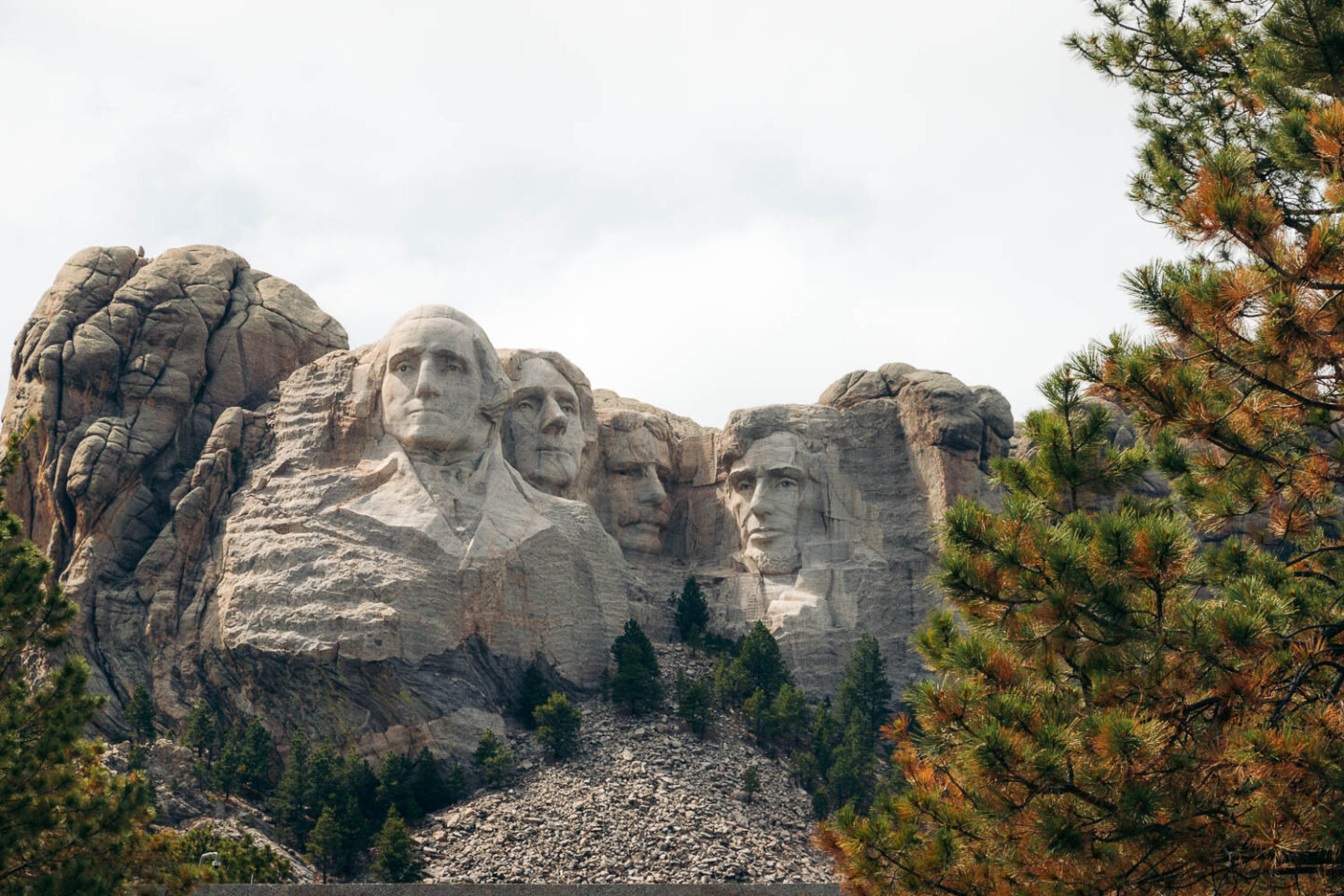
The Mount Rushmore National Memorial Story
Set in the Black Hills of South Dakota, Mount Rushmore National Memorial is one of the top attractions in the state. Every year more than 2 million people flock to this mountainous region to gaze at the granite heads of four American presidents.
Looking down at the crowds from a height of nearly 60 feet, the immortalized faces of Abraham Lincoln, George Washington, Thomas Jefferson, and Theodor Roosevelt symbolize the ideas of freedom and equality and are considered national treasures.
The urgency of building something grand, something that would bring even more tourists to the South Dakota mountains that were already getting popularity among roadtrippers brought sculptor Gutzon Borglum on board. Borglum was famous for his works depicting important figures and events of U.S. history.
The old West symbolized by such historic figures as Lewis and Clark and Lakota leader Red Cloud was to materialize on Mount Rushmore. Clash of personalities, including the sculptor’s, however, determined the fate of the future monument. The artist abandoned the project and left the state.
Once again in August 1925, Borglum was approached with a proposal to carve a monument on Mount Rushmore. The sculptor agreed. But instead of sticking to the original plan, he suggested that the sculpture depict presidents that had played a crucial role in the country’s expansion.
Controversy Surrounds Mount Rushmore National Memorial
The work on the mountain started on October 4, 1927 amid a legal battle in which the Lakota tribes sued the U.S. government for theft. Before it became famous as Mount Rushmore, the area had been a sacred place for the local Native American communities for centuries.
In 1868, the U.S. government had signed the Treaty of Fort Laramie, granting the Lakota people exclusive use of the Black Hills. A few years later, however, after the discovery of gold in the area, the government broke the treaty and appropriated the land.
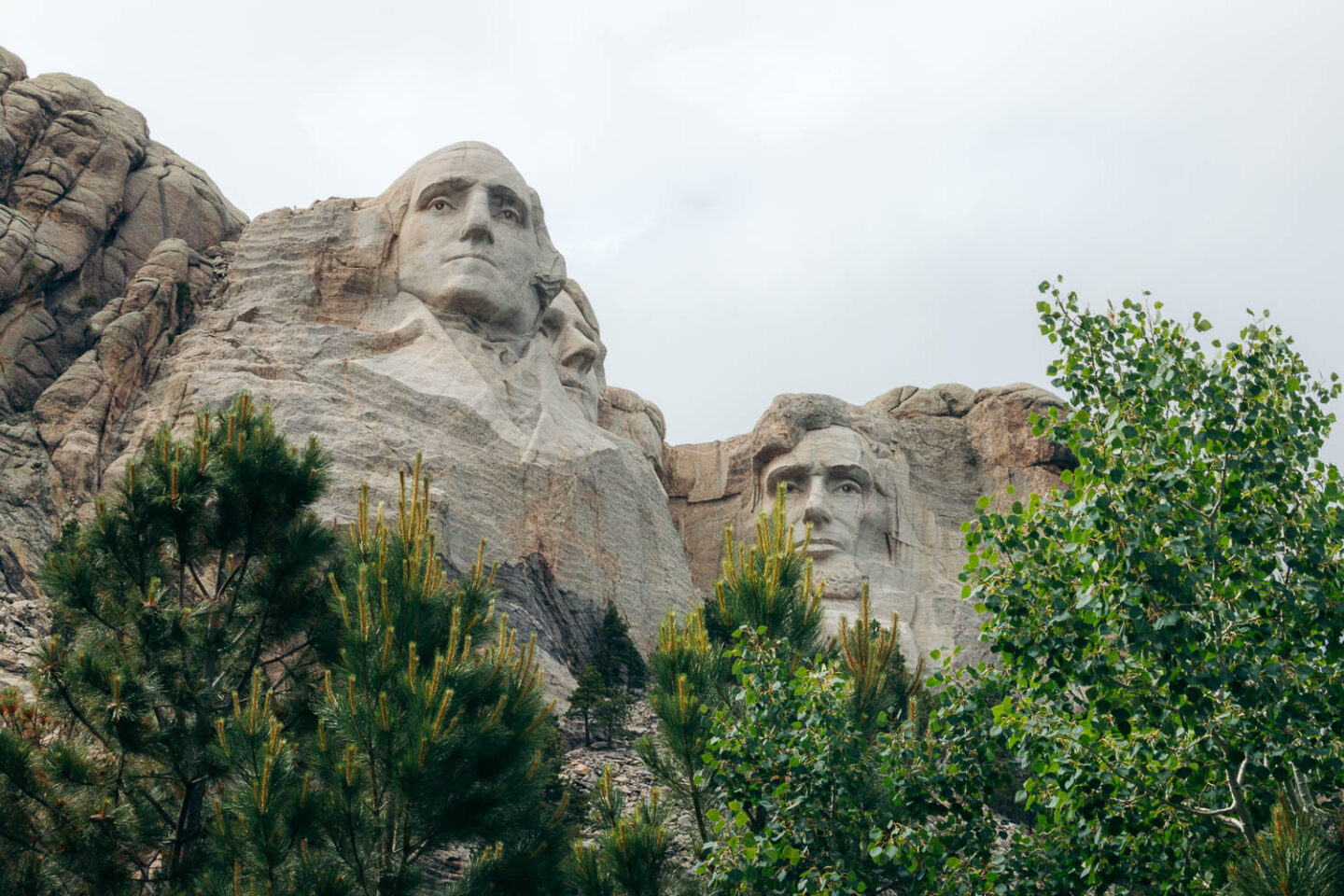
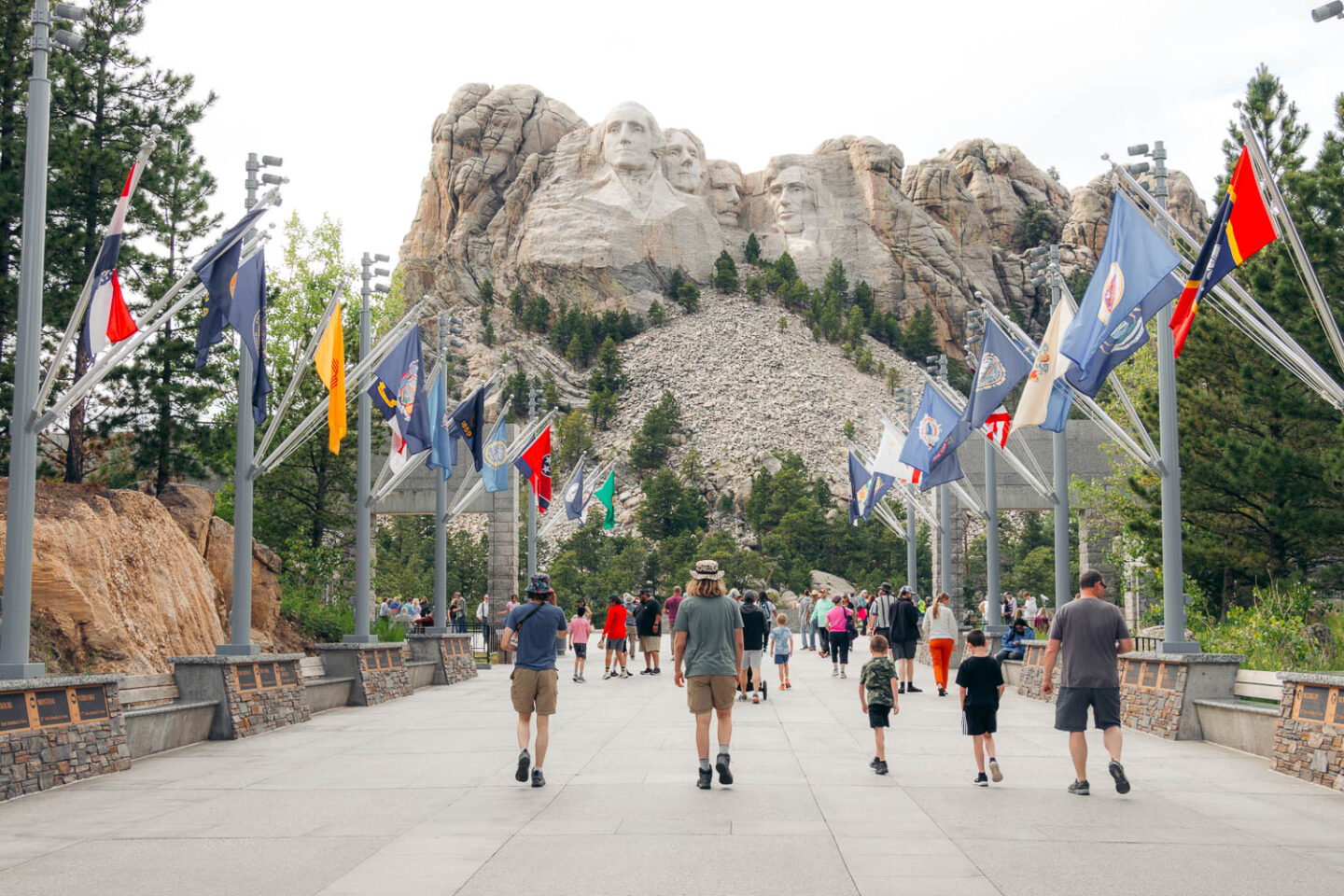
Carving the Mountain
The mountain itself proved to be hard to work on, forcing the sculptor to change the design of Mount Rushmore National Memorial. Initially Borglum intended to carve the presidents to their waists. At the very right, where the head of Lincoln towers now, the sculptor planned to include an 80-by-100-foot inscription called the Entablature.
Restricted by time, funds, and vulnerability of the mountain, Borglum later shortened the sculpture so only the heads of the presidents were carved into Mount Rushmore.
The work on George Washington’s head started. It was completed in 1934. Next, the sculptor with the crew of 400 people, mostly miners, started working on the granite image of Thomas Jefferson. The head of the third president of the U.S. was set to stand to the right of George Washington. But the stone was too weak to hold the carving.
Before revealing the next figure of Mount Rushmore National Memorial to the public, Borglum requested to blast it off. Jefferson’s head was later carved deeper into the mountain, to the left of Washington. It was completed in 1936.
Abraham Lincoln’s granite image adorned Mount Rushmore a year later while Theodor Roosevelt officially joined the stone trio in 1939.
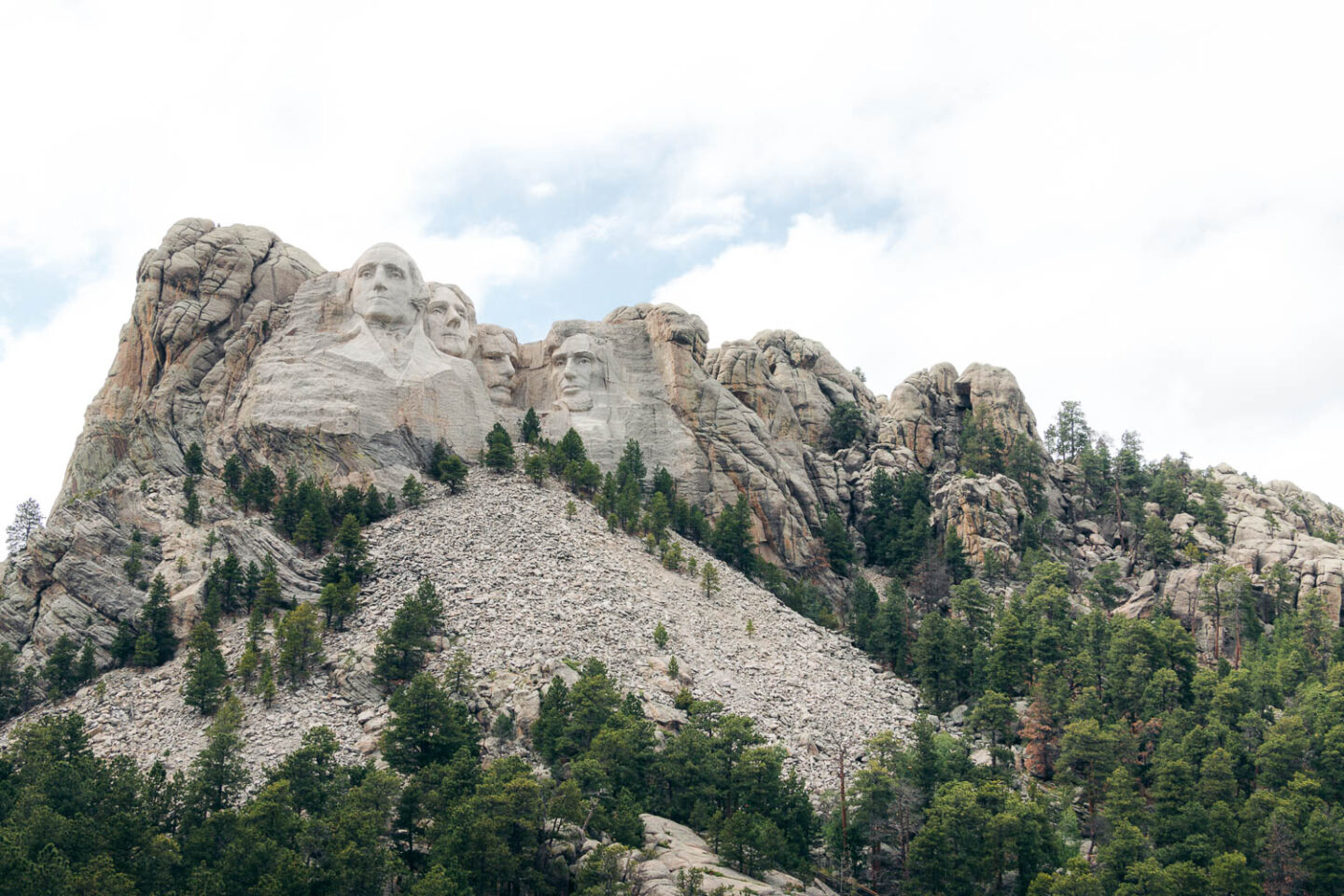
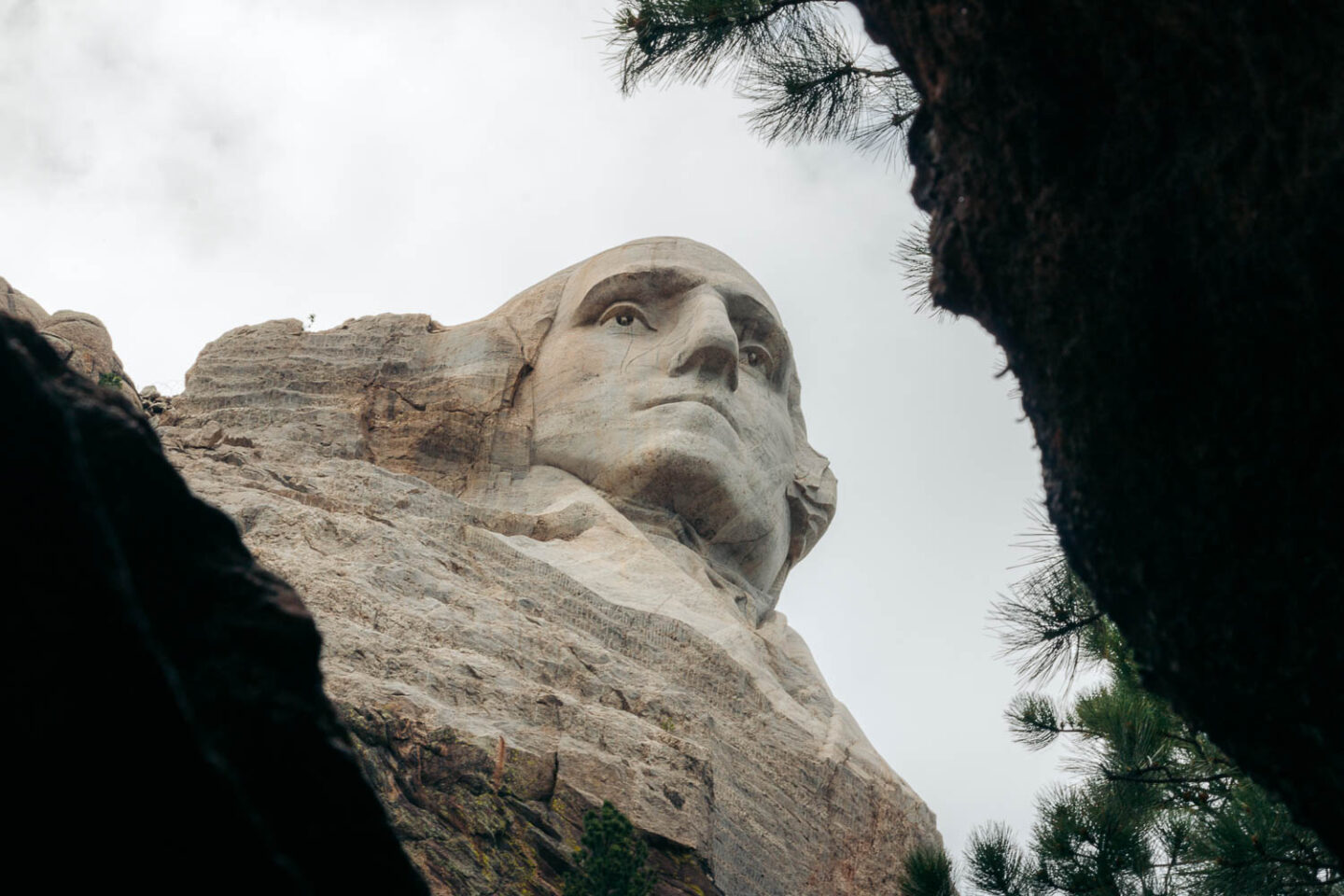
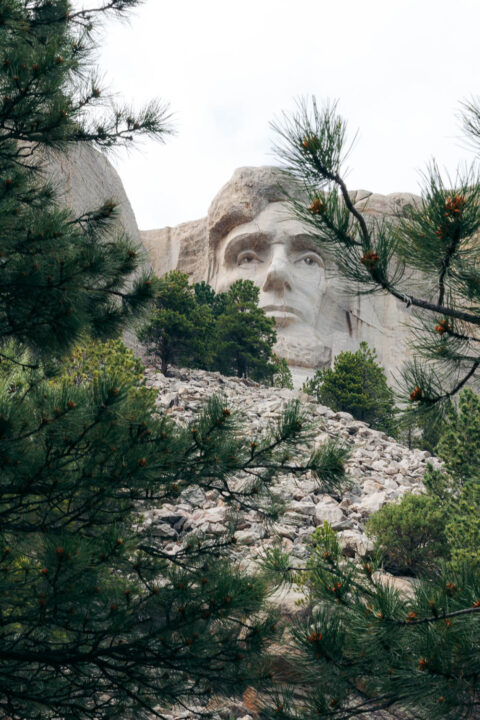
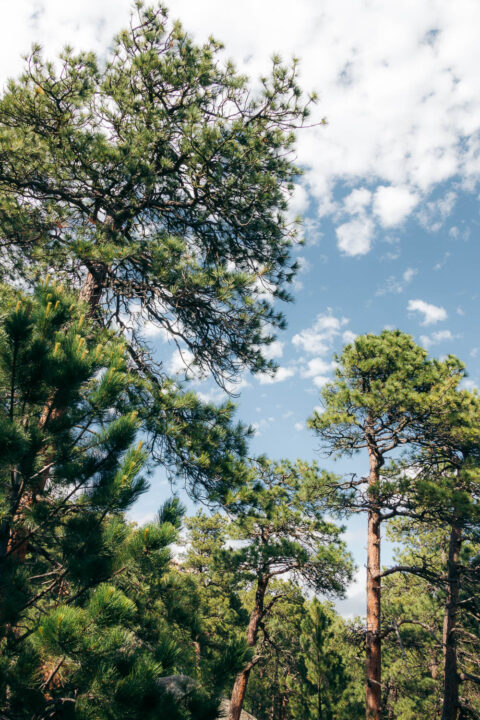
Secret Chamber
Not having space for the Entablature on the front end of Mount Rushmore, Borglum began blasting a 70-foot tunnel behind the granite faces. The Hall of Records, as he called it, would have contained historical artifacts and eventually the original Declaration of Independence.
With looming war in Europe and uncertainty about funding, the U.S. government pressed Borglum to finish the faces first. The sculptor was still working on the heads when his health declined. Borglum died on March 6, 1941, leaving his son, Lincoln, to complete the project. Mount Rushmore National Memorial was officially finished on October 31, 1941.
The unfinished tunnel stayed empty. In 1998 the National Park Service placed a titanium vault in the floor and filled it with historical documents. The secret chamber behind Lincoln’s head is not really a secret now, but it’s closed to the public.
The Closest You Can Get to Mount Rushmore National Memorial: Presidential Trail
The closest you can get to the world-famous heads of Mount Rushmore National Memorial is via the Presidential Trail. The trail starts near the Grand View Terrace, past the Avenue of Flags. It makes a loop in front of the mountain sculpture, presenting different views of the granite heads. En route back to the terrace, the trail passed by the Sculptor’s Studio with a new Mount Rushmore Bookstore.
The trail can be easy or moderate depending on where you start. If you begin your hike along the raised boardwalk to the right of the Grand View Terrace, you end up climbing lots of stairs. Walk in the opposite directions, and the stairs descend more often than ascend.
Places to Visit near Mount Rushmore National Memorial
- Crazy Horse Memorial
- Wind Cave National Park
- Custer State Park
- Jewel Cave National Monument
- Badlands National Park
- The Mammoth Site
